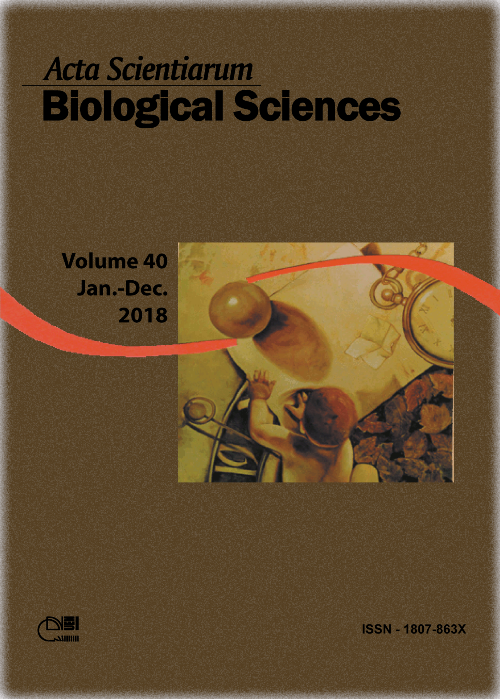<b>Selection of parasitoids of the genus <i>Trichogramma </i>(Hymenoptera: Trichogrammatidae) and parasitism at different eggs ages of <i>Duponchelia fovealis</i> (Lepidoptera: Crambidae)
Abstract
The European pepper moth Duponchelia fovealis (Zeller, 1847) (Lepidoptera: Crambidae), despite being among the principal pests of strawberries in Brazil. However, biological control methods are rarely documented for this pest. In the current study, the goal was to select promising Trichogramma strains to enable the control of D. fovealis and to determine the acceptance of different ages of host eggs by the parasitoid. In the first bioassay, evaluations were done on the biological parameters of five strains of Trichogramma pretiosum Riley and one of Trichogramma galloi Zucchi (Hymenoptera: Trichogrammatidae). The best performance came from the strains, Tp18 (T. pretiosum) and Tg (T. galloi), showing parasitism and viability higher than 50 and 90%, respectively. Another bioassay revealed the acceptance of both these species (Tp18 and Tg) for different ages of D. fovealis eggs. All host ages were accepted by T. pretiosum (Tp18) and T. galloi, with a preference for younger eggs (65% parasitism). Adult emergence, number of individuals per egg and sex ratio revealed no significant differences with respect to the host age. The current study provides pertinent data on the selection and performance of Trichogramma species on D. fovealis eggs of different ages.
Downloads
DECLARATION OF ORIGINALITY AND COPYRIGHTS
I Declare that current article is original and has not been submitted for publication, in part or in whole, to any other national or international journal.
The copyrights belong exclusively to the authors. Published content is licensed under Creative Commons Attribution 4.0 (CC BY 4.0) guidelines, which allows sharing (copy and distribution of the material in any medium or format) and adaptation (remix, transform, and build upon the material) for any purpose, even commercially, under the terms of attribution.
Read this link for further information on how to use CC BY 4.0 properly.












1.png)




3.png)













